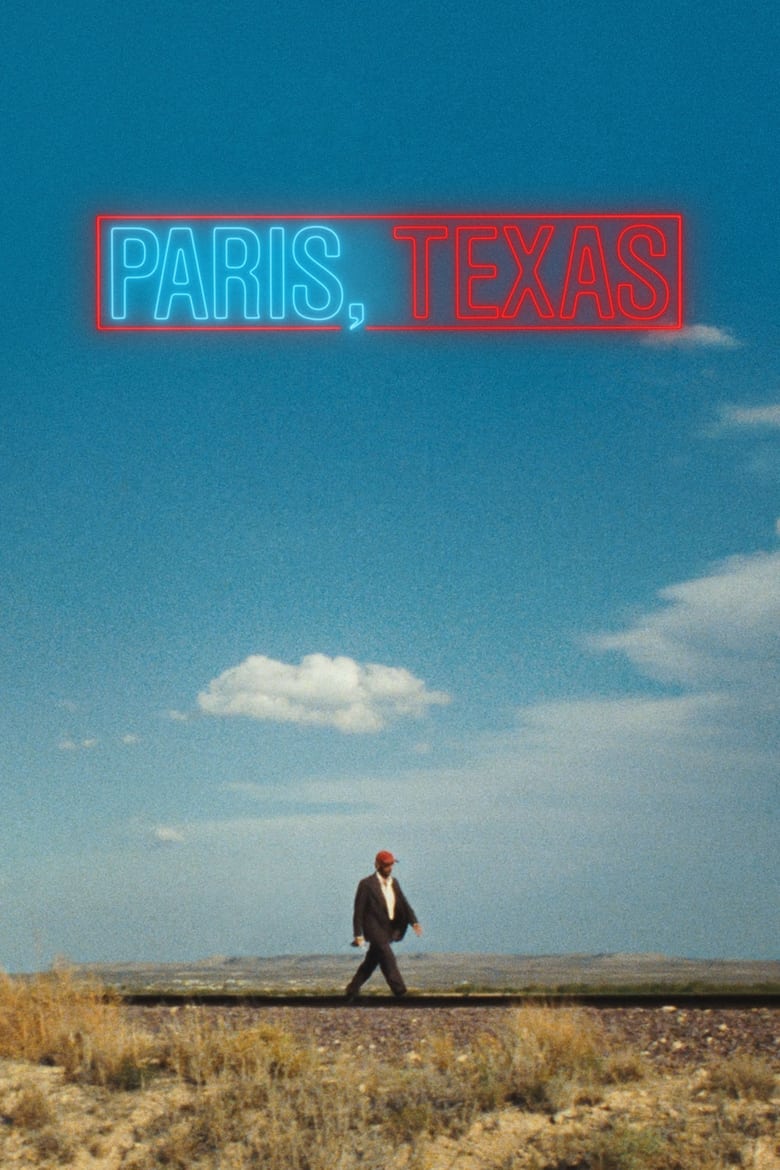
Paris, Texas
A man wanders out of the desert not knowing who he is. His brother finds him, and helps to pull his memory back of the life he led before he walked out on his family and disappeared four years earlier.

A man wanders out of the desert not knowing who he is. His brother finds him, and helps to pull his memory back of the life he led before he walked out on his family and disappeared four years earlier.

Harry Dean Stanton is on cracking form here the amnesiac "Travis". He turns up in a Texan clinic dressed in a striped suit, but recalling little for the slightly roguish doctor who helps him after some dehydrating time in the desert to use to help identify him. A tiny scrap of paper in his wallet enables him to, though, and soon "Walt" (Dean Stockwell) arrives to try and get his long-lost brother back to his own home in Los Angeles. As the story now gradually unfolds, we discover that "Travis" has a son who lives with "Walt" but we are unsure as to just what has led him to his current, absent-minded, predicament. Unwilling to fly, the two take the long road trip back getting to know each other and slowly building a renewed sense of trust before he is to be re-introduced to the son (Hunter Carson) he hasn't seen for four years and who requires some answers of his own. The last half hour brings the threads together neatly, if a little conveniently, allowing a few brief appearances from Nastassja Kinski that brings the story of "Travis" and his trauma full circle. To be honest, I found the actual plot rather weak, indeed the story isn't up to much at all really - it's the performance from HDS that is measured and engaging. His flawed character gradually comes out of his self-induced shell as it seems he is learning about himself almost at the same pace as we are - and that makes the film compelling for the most part. It's a story that takes it's time, and watching it I found it did take me a few minutes to get myself into a suitably low gear to appreciate it. It's isn't a plod, or a slow watch - it is a nuanced, occasionally amusing, search for identity - oh, and for a field in Paris, Texas!

**A film full of qualities, but which will not please the general public.**
There are films that are made for commercial audiences and others that are clearly made to please specialized critics and film theorists. Although this film was present on the commercial circuit, the truth is that Wim Wenders directed this film for critics and film festival audiences, and this explains why critics love it and why the general public hardly knows this work. . About me? To be quite honest, I didn't particularly like the film, and it's not the kind of film I like to watch or watch with pleasure. However, I am the first to recognize that it is a work full of artistic and technical qualities, and that it deserves a close look by any student and fan of the seventh art.
The plot revolves around a man who spent four years wandering through desert areas of Texas due to a huge psychological shock. We don't know what he suffered, but it is obvious that he is not well when he is finally rescued by his brother, and he spends a long time without saying a word, just trying to resume his march to nowhere. As the plot develops, we understand the emotional void he feels and desperately seeks to fill. The reunion with his son, whom he hadn't seen for years, will mark the beginning of a journey of inner healing, of reuniting with himself and the hurts of his past. The idea of family, the crisis of moral and social values, the role of men and women in marriage and the absence of feelings are themes that the film, very discreetly, addresses throughout the story it tells us.
Anyone who wants to see this film should prepare themselves for a long, very visual experience: the film is a grueling two and a half hours long and the action is quite slow. Wenders, who even thought about becoming a painter, likes to work very carefully on the visual and pictorial side of his films, and the slow action allows him, in this specific case, to explore to the maximum the visual beauty of desert scenes or urban landscapes. of Texas, where the action is concentrated. Do I need to say that the choice of sets and filming locations was one of the aspects that I liked most? Thanks to a good cinematography job, each one looks even more beautiful, wild and rude. Harmonizing perfectly with all this, the soundtrack, on guitar, plays a little with the Wild West and with the melodies that we usually associate with the Western style.
In addition to a very well done and solid plot, and good visual and technical values, the film also features the extraordinary work of Harry Dean Stanton. The actor has never been one of those stars that draws crowds, but he has quality and gives us here, probably, the best work of his film career. He is solid and impactful enough to capture our full attention with a minimum of words and facial expressions, and he doesn't say a word or change his facial expression during the first half hour of the film. The film also has excellent contributions from Dean Stockwell and Nastassja Kinski, and even young Hunter Carson does a well-done job. However, the stage is all Stanton's.